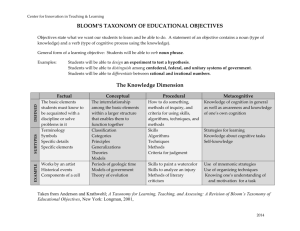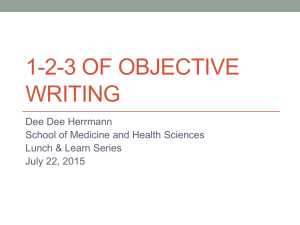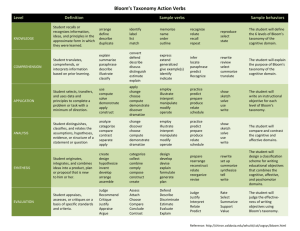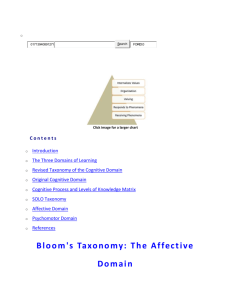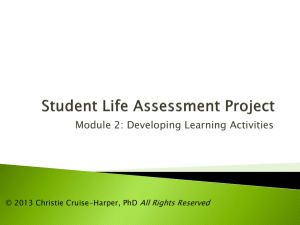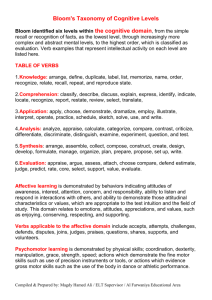Constructing Effective Assignments, Problem Sets & Exam Questions
advertisement
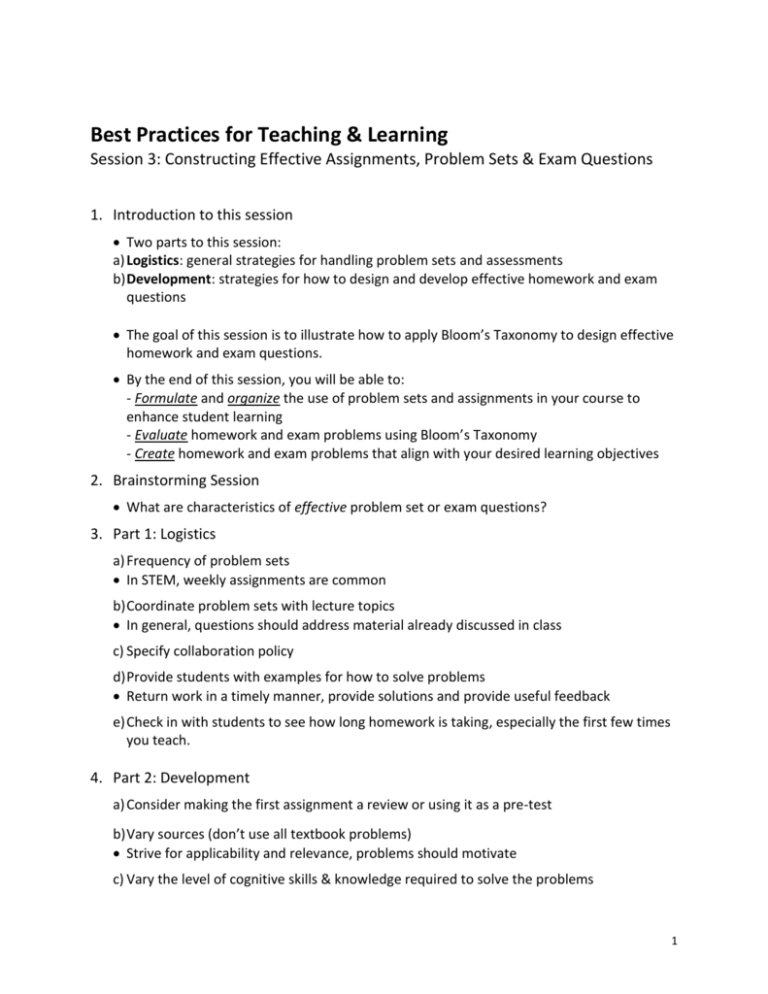
Best Practices for Teaching & Learning Session 3: Constructing Effective Assignments, Problem Sets & Exam Questions 1. Introduction to this session Two parts to this session: a) Logistics: general strategies for handling problem sets and assessments b) Development: strategies for how to design and develop effective homework and exam questions The goal of this session is to illustrate how to apply Bloom’s Taxonomy to design effective homework and exam questions. By the end of this session, you will be able to: - Formulate and organize the use of problem sets and assignments in your course to enhance student learning - Evaluate homework and exam problems using Bloom’s Taxonomy - Create homework and exam problems that align with your desired learning objectives 2. Brainstorming Session What are characteristics of effective problem set or exam questions? 3. Part 1: Logistics a) Frequency of problem sets In STEM, weekly assignments are common b) Coordinate problem sets with lecture topics In general, questions should address material already discussed in class c) Specify collaboration policy d) Provide students with examples for how to solve problems Return work in a timely manner, provide solutions and provide useful feedback e) Check in with students to see how long homework is taking, especially the first few times you teach. 4. Part 2: Development a) Consider making the first assignment a review or using it as a pre-test b) Vary sources (don’t use all textbook problems) Strive for applicability and relevance, problems should motivate c) Vary the level of cognitive skills & knowledge required to solve the problems 1 Align questions with your learning objectives Make them consistent with test questions d) Ask students to describe how they solved a problem of their or your choice e) Check and do problems before assigning them, especially exam questions 5. Discussion McClymer & Knoles. Ersatz Learning, Inauthentic Testing Suskie. Assessing Student Learning: A Common Sense Guide. Chapter 10: Creating an Effective Assignment. 6. Demonstration of how to modify a problem so that it addresses each level of Bloom’s Taxonomy Level 1 – Remember: Level 2 – Understand: Level 3 – Apply: Level 4 – Analyze: Level 5 – Evaluate: Level 6 – Create: 7. Group activities a) Pair-Share Activity (30 minutes): Use the provided handout with sample problems. 1. Select one problem from the handout. 2. Identify the problem’s core concept. 3. Determine the level of Bloom’s Taxonomy that characterizes the cognitive level of the problem. 4. Develop two new questions that address the same core concept, one for a higher cognitive level and one for a lower cognitive level of Bloom’s Taxonomy. b) Think-Pair-Share Activity (30-40 minutes): Use a textbook that is realted to a course you teach or would like to teach. 2 1. Select one problem from the textbook. 2. Identify the problem’s core concept. 3. Determine the level of Bloom’s Taxonomy that characterizes the cognitive level of the problem. 4. Develop two new questions that address the same core concept, one for a higher cognitive level and one for a lower cognitive level of Bloom’s Taxonomy. 8. Post-Session Assignment 3


